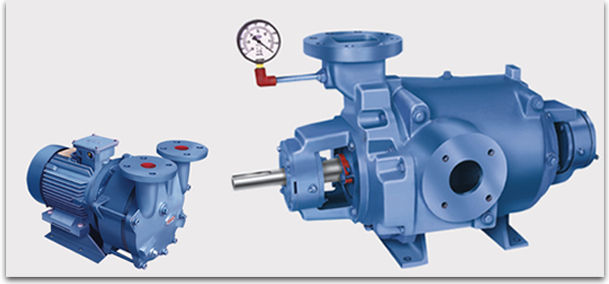Risk Analysis of a Vacuum Pump
Introduction
The Operations of the vacuum systems have been carried out safely over many years. However with the increase in the use of hazardous gasses and other toxic chemistry processes. Maintaining the safety of these pumping systems has become very difficult and risky. Anyone related with the system specifications and other analysis of the vacuum pump system should have a considerable knowledge of what all risk these pumps behold and what are the remedies.
Hazardous gases
A hazardous gas can be defined as a gas which falls into the following categories:
Radioactive
Flammable
Toxic
Corrosive
Explosive
Pyrophoric
Oxidants

It is very important to know the characteristics of these gases and the impact they may have on the safety of the vacuum system. The type of the gas that will be passed through these pumps should be discussed with the suppliers, so that you can have a clear and confident idea of the risk and safety you will be beholding. Not only the damage but these dangerous air can get caught in a reaction and produce some by-products which can also be toxic in its own way.
Flammable: Flammable effluvium are those which can result in an explosive outcome, when gets mixed with some quantity of air or oxidants. Not all concentrates are risky though. The concentrations which fall in the range of flammability are called “Potentially Hazardous Atmospheres”. Any gas or concentrate which falls into this flammable range can be explosive if ignited.
Hence the method preferred to avoid such situations are by ensuring that the air concentrate does not fall in this alerting range. Hence making sure that this air will not be exploded if any ignition takes place.
Toxic: Many of the industrial effluviums are generally considered toxic for the living and the environment; therefore it is necessary to take care of their safety. An excellent way of tackling these gases are the vacuum systems as any dent on the side will only pull in air from the outer side and will not let the inner toxic air to draw out. Considering the exhaust line, the pressure is nearly equal to the atmospheric pressure; in this condition any kind of leakage in the system will release the toxic gas.
In this case the first step is to jab and dilute the toxic to a level below the flammable exposure range using a dilutant. The pipe should be supervised for its leak tightness so that there would be no leakage of the gas while processing. The standard pipework ISO-KF or ISO-K is advised for a leak tight design of the vacuum standards. When the toxic air is pumped in to the pipes there is a possibility that some unwanted pollutants may be already present in it. These internal pollutants can get mixed with the air pumped in and can cause hazardous outbreaks. Thus before any gas getting processed into the pipe make sure the vacuum system is purged and all the hazardous materials are removed.
Corrosive: The corrosive gasses are one of the most hazardous infectants to the chemical vacuum systems. Their characteristics and the after effects should be studied properly to know the kind of damage they can cause to the pipelines. The compatibility should be confirmed as the corrosion can be based on chemical, physical or electro chemical reactions. These corrosive pollutants have the ability to damage and destroy the pump materials.
The first step taken to avoid corrosive damage is by passing purge gasses into the gas ballast. When pumps are off it is advised to allow small flow of purge gas to be run into the purge pump. A check valve should be installed to avoid back streaming of wet air. The sealing material should be compatible to the corrosive nature of the material. Any use of aluminum or its alloys are not recommended so as to avoid any type of reaction. Similarly it is not a good idea to use brass or copper with the reactive gasses. It is advised to oil the corrosive gases to prevent oil degradation.
Explosive: The materials that can cause reaction without any presence of air are particularly called explosive, materials and are extremely hazardous to pumps. There are chances that explosive slid materials are collected at the horizontal surfaces which can cause dangerous reactions. Thus minimalising the material formation with etch performance can reduce to risk of hazardous event. It is not enough that the poly silicon formation is etched, after the etching the poly silicon should be washed out effectively, thus leaving less chances of explosion risk.
This article has been posted by Ajit Joshi.

















